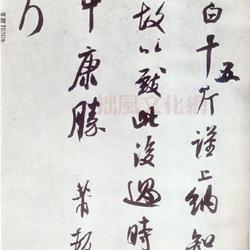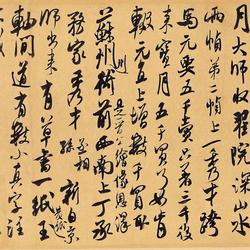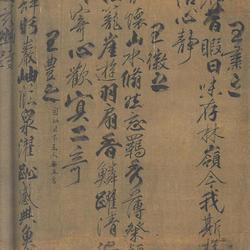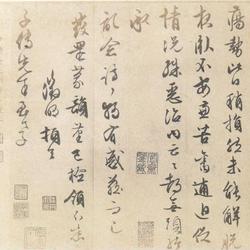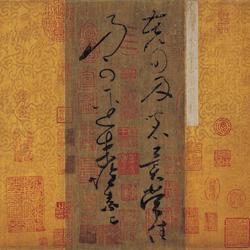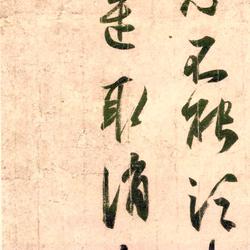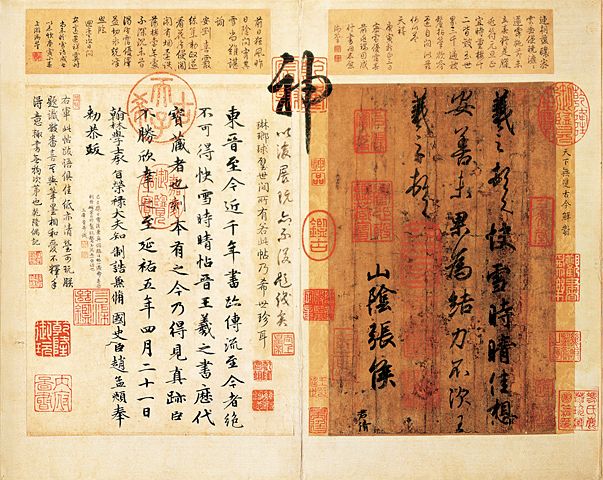
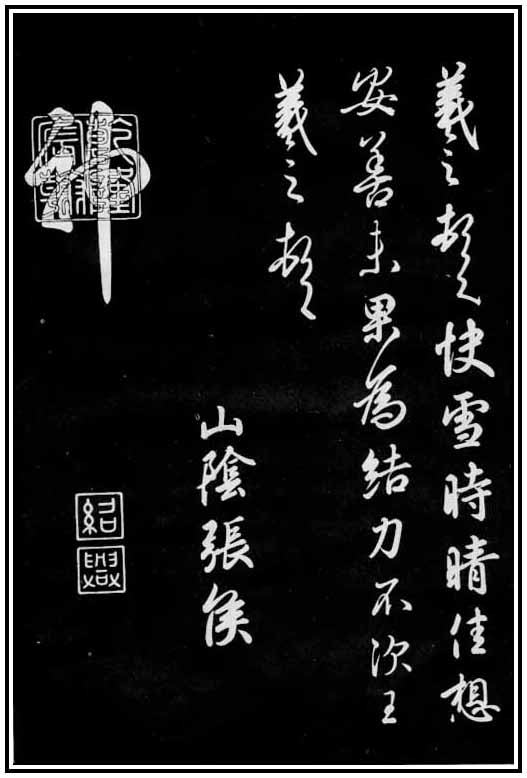
original
Snow clear picture
[3] Xizhi paused and said: It will snow soon and then it will clear, which is better. Want peace and kindness ①. Failure to achieve results is knot ②, and strength is not inferior to ③. Wang Xizhi paused. Shanyin Zhanghou ④. [4]
annotation
①Anshan: Anji, Anhao. [5]②Knot: It is a metaphor for feeling depressed and having a knot in your heart. [6]③Buci: The wording at the end of the letter means unknown. Wang Xizhi's "Dao Protector's Notes": "I received the letter on the 23rd, for comfort. It was returned, but not the second time. Wang Xizhi's retribution." [7] ④ Zhang Hou: name, unknown. The four characters "Shanyin Zhanghou" are located at the bottom of the last line, which is the recipient of the ruler. This shows the form of calligraphy in the Eastern Jin Dynasty. [8]
main idea
Wang Xizhi paid his respects: It will be fine after the snow has cleared up. I hope you are fine. The matter has no result, and I feel depressed, so I don’t know what to say. Wang Xizhi paid homage to Zhang Houqi from Shanyin.
Gesture
"Quick Snow and Clear Post" Post and Postscript
"Kuai Xue Shi Qing Tie" mainly uses round brushes to hide the sharp edge. When starting and closing the brush, hooks, waves, and strokes do not show any sharpness. The brush strokes mostly turn from horizontal to vertical to circular. The structure is even and stable, showing calmness and calmness. The mood is neither slow nor slow. Zhan Jingfeng, a connoisseur of the Ming Dynasty, described its characteristics as "round, vigorous and elegant, with a leisurely and leisurely mood, and an unfathomable taste".
calligraphy style
"Kuai Xue Shi Qing Tie" is rich in writing and writing. Li Rihua in the Ming Dynasty wrote "Liu Yan Zhai Er Bi" which says: "Jin Dynasty is a clear language, even if the words are fragmentary, the words are clear. Among the 24 characters at the beginning and end of Kuai Xue Tie, none of them are the last ones. As far as anyone can tell, how can Youjun, who is so noble and elegant, specialize in calligraphy?" (Quoted in Volume 79 of "Peiwenzhai Calligraphy and Painting Manual"). The calligraphy is skillful and dense, the meaning is sparse and the words are slow, the ink is clear and hearty, and the shades are appropriate; the pen is round, clean and vigorous, and the ups and downs of rhythm and elasticity are relatively peaceful; the structure is mainly square, stable and full, and timeless. When it is collected and released, it can contain energy and expand, embody strength in beauty, and express feelings and thoughts on the tip of the pen.
calligraphy
Although "Kuai Xue Shi Qing Tie" is only about 20 words long, it shows the artistic conception of harmony and wonderful combination of nature. The running script has the style of regular script, with two consecutive "pauses" in cursive script, and the second line "fruit" "Wei" is also written in continuous strokes. This book mainly uses round pens with hidden edge, with a calm and unhurried expression. The pen is started and closed, and the strokes are changed. It is like a mountain containing jade. Although it only shines with the sharp edge, it has spiritual connotation. The strength of the bones is hidden. Those who know it have "round strength, ancient elegance, and artistic conception." "It's leisurely and comfortable, and the taste is unfathomable". And his calligraphy style of peace, simplicity, calmness and elegance has become the characteristic of Jin people's calligraphy.
Influence
"Kuai Xue Shi Qing Tie" is different from the typical style of Wang Xizhi's running script. The emphasis is on the roundness of the strokes, the gentle rhythm and elasticity of the strokes and strokes, and the structure is mainly square, stable and full. In the Tang Dynasty, Li Yong's "Lushan Temple Stele" and "Li Xiu Stele" ("General Yunhui Stele") borrowed more from the "Kuaixueshiqingtie" in style and writing style, especially the running script written by Zhao Mengfu in his later years in the Yuan Dynasty, which is also a distant ancestor. "Quick Snow and Clear Post".

